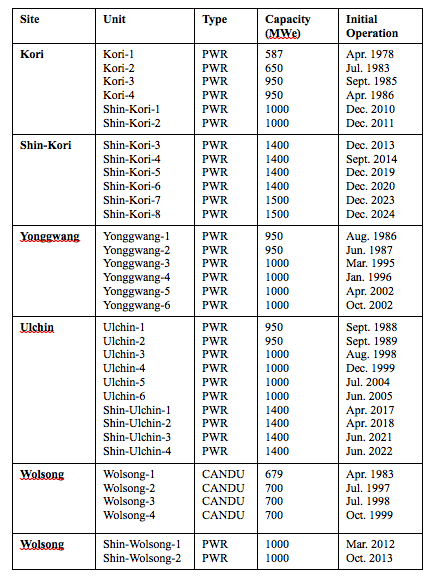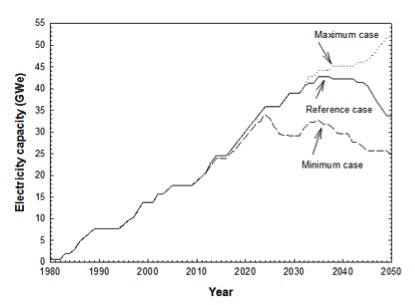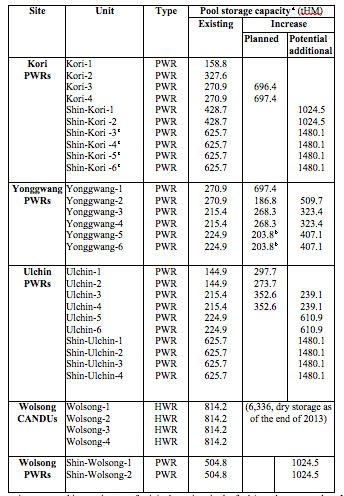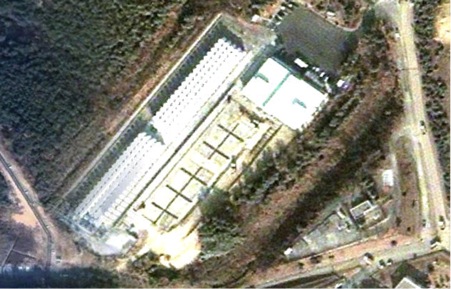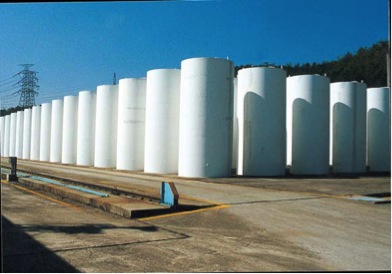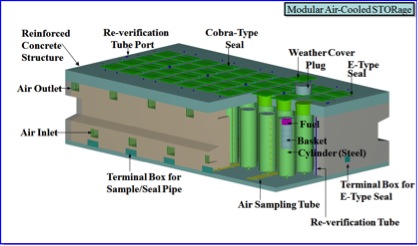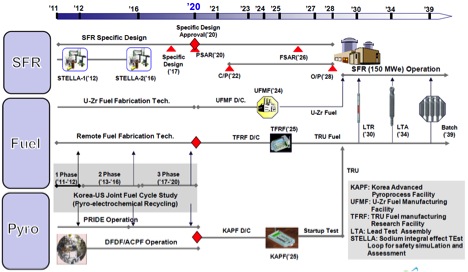by Jungmin Kang
10 July 2014
Originally published 5 March 2014 for Korea Advanced Institute of Science and Technology, Daejeon, Republic of Korea.
I. Status of and Prospects for Nuclear Power in the Republic of Korea
One of the most rapidly growing developed countries in the world today, South Korea (the Republic of Korea, or ROK) has been increasingly relying on nuclear power since 1978, when it started its first commercial nuclear power plant. The ROK imported 96.0% of its primary energy resources (at a cost of 184.8 billion US dollars) from abroad in 2012, to compensate for its lack of domestic reserves.[1] This high level of imports is the energy supply security consideration driving the ROK’s reliance on nuclear power.As of February 2, 2014, the ROK had 23 power reactors in operation, with a total capacity of 20.7 GWe. The ROK reactor fleet as of August 2013 consisted of 19 pressurized water reactors (PWRs) and four CANDU heavy water reactors (HWRs), the latter with a combined capacity of 2.8 GWe,[2] An additional 6.6 GWe of PWRs were under construction,[3] and additional PWRs capacity was planned that would bring South Korea’s total nuclear generating capacity up to 43 GWe by 2035.[4] Figure 1 shows the expected reference case trend in installed nuclear capacity through 2035. Table 1 shows the generating capacities and expected initial operating dates of the ROK’s power reactors through 2027.[5]
Figure 1. Installed nuclear generation capacity in the ROK (1980-2035)
Table 1. Current and planned nuclear power capacity in the ROK through 2027
All of the nuclear power plants in The ROK are located along the coast of the peninsula, as shown in Figure 2.[6] On September 14, 2012, Ministry of Trade, Industry and Energy (MOTIE) announced that Yeongdeok and Samcheok both located on the East coast, have been identified as new sites for nuclear power plants.[7] Satellite images of each of the four nuclear power plant (NPP) sites in the ROK are provided as Figure 3 through Figure 6.
Figure 2. Locations of the ROK’s nuclear power plants
Figure 3. Satellite image of Kori NPP site (Google Earth, October 10, 2010)
Figure 4. Satellite image of Yonggwang NPP site (Google Earth, October 10, 2010)
Figure 6. Satellite image of Wolsong NPP site (Google Earth, October 10, 2010)
II. Nuclear Power Plants Deployment Scenarios
Considering the uncertainty with regard to the nuclear power sector, this study assumes maximum case and minimum case scenarios for the projection of NPPs deployment in the ROK. Projections of nuclear power capacity through 2035 as planned by the ROK government will serve as the reference case for this study. Table 2 shows the assumptions associated with the three NPPs deployment scenario analyzed. Figure 7 shows the projected nuclear generation capacity in the ROK under each scenario through 2050.
Figure 7. Projected nuclear generation capacity in the ROK for each scenario (1980-2050)
III. Status of and Prospects for Spent Fuel Generation
As of the end of 2012, 5,829 tHM (tons heavy metal) of spent PWR fuel and 6,878 tHM of spent HWR fuel were stored in the spent fuel storage facilities at The ROK’s four NPP sites. Table 3 shows the spent fuel inventories at the four sites as of the end of 2012.[8]
Table 3. Inventory of spent fuel at NPP sites in The ROK as of the end of 2012
Projections of spent fuel generation depend on the capacity factors of the reactors (that is, what fraction of the time they operate and at what average fraction of their nominal capacities), and the burnup of spent fuel (that is, the number of megawatt-days of heat that can be generated from a unit of fuel before it is discharged from the reactor, or “spent”). The average discharged burnup level for spent PWR fuel is around 50,000 MWd/tHM in today’s reactors. Heavy-water reactors are fueled with natural uranium, and the burnup rate is about 7,100 MWd/tHM. Assuming that all NPPs have thermal efficiencies of 33% and capacity factors of 90 percent, the projections through the year 2050 of cumulative spent fuel generation in the ROK from reactors are given in Figure 8 for the PWR spent fuels and in Figure 9 for the CANDU spent fuels.[9] Even by 2050, the difference between the minimum and reference cases for PWR spent fuel is only on the order of 11 percent, while the maximum case produces a 2050 inventory of PWR spent fuel 7 percent higher than the reference case. For CANDU spent fuel, the reference case is about one third higher than the minimum case, which foresees decommissioning of the ROK’s existing CANDU units by around 2020, without replacing them. There is no difference between CANDU spent fuel generation in the reference and maximum cases.
The ROK startedto research and designed a central interim spent-fuel storage facility and repository for low and intermediate level waste (LILW) in 1986. The implementing organizations for this effort were KAERI and then-Ministry of Science and Technology. In July 1988, the Korean Atomic Energy Commission (AEC) announced that a centralized away from reactor (AFR) facility would be constructed by December 1997. In December 1988, the AEC announced the intention to construct a wet-type AFR with a capacity of 3,000 t of spent fuel. Due to strong opposition from local potential host communities that have developed in the wake of these announcements, all attempts to acquired AFR sites have failed since 1987. In 1996, the responsibility for radioactive waste management was transferred first to the then-Ministry of Commerce, Industry and Energy, then on to KEPCO. In September 1998, the AEC announced that a LILW disposal facility would be built by 2008 and an interim spent-fuel storage facility would be built nearby by 2016. The AEC also announced the intent to acquire 2,000 t of spent fuel storage capacity at a dry facility AFR site by 2016. Due to continuing difficulties in securing sites since 1996, the AEC decided to pursue separate sites for the LILW repository and the central spent-fuel storage facility. The AEC recently announced that it would adopt a public and stakeholder engagement process to help to reach agreement on a site for an AFR spent fuel storage facility.[10]
Figure 8. Cumulative inventory of the PWR spent fuel generation in the ROK (2000-2050)
In the ROK, the Ministry of Trade, Industry and Energy (MOTIE, previously the Ministry of the Knowledge Economy) is primarily responsible for making and approving plans regarding nuclear reactor deployment. Although there has been some limited public concern about reactor deployment and other nuclear energy plans in the ROK, the role that the public has in terms of input to nuclear energy-related decisions is extremely limited. As of this writing, it does not seem that the Fukushima accident has significantly affected thinking on the part of nuclear policymakers regarding reactor deployment in the ROK.
Figure 9. Cumulative inventory of the CANDU spent fuel generation in the ROK (2000-2050)
IV. Shortage of Sites’ Storage Capacities for Spent Fuel
The ROK maintains its inventory of spent reactor fuel in wet storage spent fuel pools at each of the four reactor sites, and at a dry storage facility at Wolsong. Table 4 shows current, planned and potential pool spent fuel storage capacity in The ROK through 2021.[11]
Dry storage facilities are only used for CANDU spent fuel at the Wolsong site, partly because of the much lower burnup of CANDU spent fuel than that of PWR spent fuel (and thus the higher volume and lower radioactivity of CANDU spent fuel). CANDU spent fuel is transported to the dry storage facilities via a road on the reactor site; the dry storage site is adjacent to the reactor site.
Multi-reactor nuclear plant sites in the ROK do not use centralized spent-fuel pools accepting fuel from multiple reactors. Rather, for each reactor, the spent fuel pool is located in the fuel building next to the domed reactor containment building at ground level. The spent fuel pools at the ROK reactors are typically 40 or more feet (12 meters) deep. Although the sizes of the spent fuel pools in use varies among the ROK reactors, by way of example, the spent fuel pools serving the Yonggwang 5 and 6 units are 902 cm long, 743 cm wide and 1204 cm deep.[12]
Table 4. Current, planned and potential spent-fuel storage capacity in The ROK through 2021
a Pool storage capacity measured in metric tons of original uranium in the fuel (tons heavy metal or tHM). These values do not include the pool capacity for a full reactor core that is held open in case all the fuel in the current reactor core has to be unloaded quickly. b Planned for installation in 2012.c Shin-Kori 3,4,5 and 6, although contiguous with Kori 1,2,3 and 4 and Shin-Kori 1 and 2 are in a different local jurisdiction. Moving spent fuel from pools in one jurisdiction to pools in the other therefore would require permission from the second jurisdiction.According to an analysis by the operator, Korea Hydro & Nuclear Power Co., Ltd, the saturation dates for the current spent fuel storage at the Kori, Yonggwang and Ulchin sites for spent PWR fuel, and at the Wolsong site for spent HWR fuel, will be 2016, 2021, 2018 and 2017 respectively.[13] KHNP did not fully consider the potential for dense racking arrangement of spent fuel assemblies in pools in its assessment—“re-racking” was assumed in the spent fuel pools of some reactors but not in others.
However, when KHNP stated that the spent fuel pools at Kori will be full in 2016, it had considered only intra-site transshipment of spent fuel among the pools of the four older Kori reactors. That is, for example, KHNP considered only transfers such as from the Kori unit 1 to unit 4 on the same site. The old spent fuel in the pools of the older (pre-2010) 4 reactors at the Kori site could in practice be shifted to the pools built for the newer 2 reactors, that is, the Shin-kori units 1 and 2 that went into operation in 2010 and 2011, respectively, on the same site. If this intra-site transshipment of spent fuel is implemented, it extends the saturation year for spent fuel pools from 2016 to 2023.
At the Ulchin site, similarly, KHNP considered only intra-site transshipment of spent fuel among the pools of the old 6 reactors, that is, between Ulchin units 1 to 6 on the site. The old spent fuel in the pools of the older 6 reactors could in practice be shifted to the pools of the newer 4 reactors, that is, to Shin-ulchin units 1 to unit 4, which are to be put in operation on the same site from 2015 through 2021. If implemented, this extends the saturation year for spent fuel pools at the Ulchin site from 2018 to 2028.
With regard to the reactors on the Yonggwang site, KHNP’s assessment of the date of saturation might be accurate, considering that there are no plans for new deployment of NPPs at the site until 2022 at the earliest, and thus no adjacent new spent fuel pools to which to move existing inventories.
The situation of storage of spent fuel at Wolsong is somewhat complex, compared with that at the other PWR sites. According to a law entitled “Special Act on Support for Areas Hosting Low and Intermediate Level Radioactive Waste (LILW) Disposal Facility”, dated 2005, spent fuel-related facilities cannot be built in the local area that hosts the LILW site, which includes the Wolsong site. Some South Korean nuclear experts argue that the law means that no more dry storage facilities are to be built after 2017 when current dry storage will be full. However, the Korea Radioactive Waste Agency (KORAD, then- KRMC) argues that those dry storage facilities at Wolsong are “tentative” ones, not the types of “interim” storage that are banned by the 2005 Special Act of LILW. “Tentative” storage means storage of spent fuel on site under the control of KHNP, whereas “interim” storage means storage of spent fuel on site or at an AFR site under the control of KORAD, though this is an administrative difference only, as there is no physical difference between “tentative storage” and “interim storage”.
KHNP has expanded the capacities of dry storage at Wolsong by 680 tHM in 1990, 907 tHM in 1998, 680 tHM in 2002, 1134 tHM in 2006 and 3528 tHM in February 2010 for a total of 6,929 tHM dry storage capacity and 3,053 tHM pool capacity as of August, 2012. Whether or not dry storage facilities at Wolsong violate the special Act of LILW is still controversial and needs to be clarified by the ROK government.
Figures 10, 11 and 12 show the dry spent fuel storage facilities at the Wolsong site. 300 concrete silos (3,120 tHM) have been installed at Wolsong since 1990, while 7 MACSTOR/KN-400 modules (3,227 tHM) have been installed since 1990.
Figure 10. Concrete silo and MACSTOR/KN-400 at Wolsong (Google Earth, October 10, 2010)
Figure 11. Concrete silo at Wolsong[14]
Figure 12. MACSTOR/KN-400 modules at Wolsong[15]
According to a recent study performed by an expert group composed of members of the ROK’s nuclear establishment, the storage pools at the ROK’s four reactor sites, Kori, Ulchin Yonggwang, and Wolsong are projected to be full by 2028, 2028, 2024 and 2025, even considering re-racking and intra-site transshipment between NPPs at individual PWRs sites, as well as the installation of two additional MACSTOR/KN-400 modules at Wolsong.[16]
V. National Policy on Spent Fuel Management
At its 253rd meeting in 2004, the AEC announced that national policy for spent fuel management would be decided later in consideration of progress of domestic and international technology development, and that spent fuel would be stored at a reactor sites through 2016 under KHNP’s responsibility.[17] Since The ROK has not decided whether to directly dispose of or recycle spent fuel, it currently has no national plan on geologic disposal of spent fuel.
A KORAD report assumes operation of AR and/or AFR interim dry storage of spent fuel in around early 2020s, operation of geologic disposal site for CANDU spent fuel in around 2050, and operation of geologic disposal site for PWR spent fuel and/or HLW from pyroprocessing in around 2070.[18]
VI. Legal and Institutional Issues in the Radioactive Waste Management
Key ROK National laws related to spent fuel and radioactive waste management are the Atomic Energy Act (AEA) and the Radioactive Waste Management Act (RWMA). The AEA provides for matters concerning safety regulations, including permission for construction and operation of radioactive waste disposal facilities. The RWMA, which determines all aspects of managing radioactive waste, was enacted on March 31, 2008. Based on the RWMA, the KORAD and the Radioactive Waste Management Fund were established in January 2009. According to the RWMA, KHNP, the utility company, should annually deposit to the Fund payments toward the cost of decommissioning of nuclear power plants, disposal of low and intermediate level waste (LILW), and spent fuel management.[19] Funds for these activities are collected from electricity consumers via tariffs; data how these funds are collected and disbursed for nuclear sector activities in the ROK are not yet public information.
With regard to the governmental organizations concerned with radioactive waste, the main administrative authorities in the ROK are the Ministry of Trade, Industry and Energy (MOTIE, previously the Ministry of the Knowledge Economy), which supervises the nuclear power program, and a newly founded Nuclear Safety and Security Commission (NSSC) under the jurisdiction of the Prime Minister, which is responsible for nuclear safety regulations including the licensing of nuclear facilities as well as nuclear security.[20] The Atomic Energy Committee (AEC) under the jurisdiction of the Prime Minister is the supreme organization for decision-making on national nuclear policies. The NSSC is responsible for matters concerning the safety of nuclear facilities and radioactive waste management. NSSC is also responsible for developing licensing criteria for the construction and operation of radioactive waste disposal facilities, for developing technical standards for operational safety measures, and for assuring safe management of radioactive waste at every stage of the life cycle of waste disposal facilities, including the site selection, design, construction, operation, closure and post-closure phases. MKE also develops and implements management policies regarding radioactive waste treatment, storage and disposal. These policies are prepared by MOTIE and deliberated by the AEC before implementation.
VII. KAERI’s Plans for Pyroprocessing and Fast Reactors
The ROK’s debate regarding spent fuel management has been focused on “pyroprocessing,” driven by the Korean Atomic Energy Research Institute (KAERI). KAERI has been developing pyroprocessing technologies, in which plutonium and other transuranics are electrochemically separated from uranium and fission products in spent fuel after the dissolution of spent fuel in molten salt. Pyroprocessing is thus different from typical aqueous reprocessing, which separates pure plutonium from other spent fuel components. KAERI argues that with pyroprocessing, less spent fuel waste would need to be disposed of, in that the transuranics, after being separated and fabricated into reactor fuel, can eventually be fissioned in fast neutron reactors.[21] KAERI insists that pyroprocessing and recycling of spent fuel is the best alternative for reducing the future burden of geologic disposal of spent fuel, a view supported by the Ministry of Science, ICT and Future Planning (previously the Ministry of Education, Science and Technology). Figure 13 shows KAERI’s plan for deployment of pyroprocessing and fast reactors in the ROK. A 10-year US-ROK joint study on pyroprocessing has been underway since 2011. No plans as to the location of potential pyroprocessing or fast reactor facilities in the ROK have been announced to date.
Figure 13. KAERI’s plan on pyroprocessing and fast reactors [22]
VIII. CONCLUSION
The ROK’s current nuclear capacity of 20.7 GWe will, under current plans, be approximately doubled by 2030. Given the current lack of pool storage capacity for PWR spent fuel, the problem of PWR spent fuel storage in the ROK will become worse in the near future.Decisions regarding the interim storage of spent fuel will play key roles in shaping nuclear fuel cycle activities and development in the ROK in the coming years because interim storage would provide flexibility in nuclear sector decision-making—whether or not the ROK moves toward pyroprocessing—by delaying, possibly for decades, the day when final decisions regarding spent fuel management must be made.
A 10-year US-ROK joint study on pyroprocessing, begun in 2011, will likely also affect future nuclear fuel cycle activities and development in the ROK.If the joint study reaches a positive conclusion regarding pyroprocessing, it could affect the ROK government’s consideration of deployment of pyroprocessing as a means to resolve the ROK’s spent fuel storage problems.
In terms of the potential impact of the Fukushima accident on ROK policy, the ROK public might, after seeing the Fukushima accident play out, be more accepting in the future of dry storage facilities if the public is more fully educated about the relative safety aspects of different spent fuel storage options. The deployment of dry storage facilities for spent fuel will likely be a key factor affecting nuclear fuel cycle activities and development in the ROK in the coming years.
A government-supported committee tasked with carrying out a public consultation process on spent fuel management in Korea was established in October 2013. The 13 committee members are from academia, local communities and non-governmental organizations. The committee plans to provide recommendations to the South Korean government on spent fuel management by the end of 2014, following a public consultation process including meetings, seminars, fora, surveys, and other events and activities.[23]
IV. REFERENCES
[1] Korea Energy Economics Institute, 2013 Energy Info. Korea, December 2013.
[2] Retrieved February 2, 2014 from website: http://www.nppinfo.co.kr/action?cmd=NOPA01.
[3] Retrieved February 2, 2014 from website: http://www.khnp.co.kr.
[4] Ministry of Trade, Industry and Energy, The 2nd National Energy Basic Plan, January 2014 (Korean).
[5] Ministry of Trade, Industry and Energy (previously Ministry of Knowledge Economy), The 6th Basic Plan for Long-Term Electricity Supply and Demand (2013 ~ 2027), January 2013 (Korean).
[6] International Panel on Fissile Materials, Managing Spent Fuel from Nuclear Power Reactors: Experience and Lessons from Around the World, September 2011, p.62.
[7] http://www.ytn.co.kr/_ln/0102_201209140905445385
[8] Ministry of Trade, Industry and Energy (MOTIE), “Status of Spent Fuel Management and Plan for Public Consultation Process,” May 2013 (Korean).
[9] Author’s calculations.
[10] South Korea chapter of Managing Spent Fuel from Nuclear Power Reactors,: Experience and Lessons from Around the World, International Panel on Fissile Materials, September 2011; Seong-Won Park, “Pyroprocessing Technology for Sustainable Nuclear Energy,” Presentation given at a workshop on Status of Reprocessing Worldwide and Pyroprocessing in South Korea, Seoul, South Korea, October 26, 2012.
[11] International Panel on Fissile Materials, Managing Spent Fuel from Nuclear Power Reactors: Experience and Lessons from Around the World, September 2011, p.69.
[12] Jungmin Kang, “Alternatives for Additional Spent Fuel Storage in South Korea,” Science & Global Security, Vol. 10, No. 3, 2002.
[13] Ki-Chul Park, “Status and Prospect of Spent Fuel Management in South Korea,” Nuclear Industry, August 2008 (in Korean)
[14] “Status and Prospect of Spent Fuel Management,” KRMC, October 2011 (Korean)
[15] Ibid.
[16] Korea Radioactive Waste Management Corporation, “Alternatives and Roadmap of Spent Fuel Management in South Korea,” Final report prepared by Korean Nuclear Society, Korean Radioactive Waste Society and Green Korea 21, August 2011 (Korean)
[17] 253rd meeting of Korea AEC in 2004. See, for example, Ministry of Education, Science & Technology, Korean Third National Report under the Joint Convention on the Safety of Spent Fuel Management and on the Safety of Radioactive Waste Management, dated October, 2008, and available as www.kins.re.kr/pdf/Korean%20Third%20National%20Report%202008.pdf.
[18] Korea Radioactive Waste Management Corporation, “Alternatives and Roadmap of Spent Fuel Management in South Korea,” Final report prepared by Korean Nuclear Society, Korean Radioactive Waste Society and Green Korea 21, August 2011 (Korean)
[19] Ibid.
[20] Retrieved August 16, 2012 from website: http://www.nssc.go.kr/nssc/english/introduction/purpose.html.
[21] Jungmin Kang, “South Korea in focus: The Politics of Spent Fuel Storage and Disposal,” Bulletin of the Atomic Scientists, May/June 2011.
[22] Chan-Bock Lee, et al., “Status of SFR Metal Fuel Development,” International Conference on Fast Reactors and Related Fuel Cycles: Safe Technologies and Sustainable Scenarios (FR13), Paris, France, March 4-7, 2013.
[23] A public consultation committee on spent fuel, “Action Plan for Public Consultation Process on Spent Fuel,” January 29, 2014 (Korean).
X. NAUTILUS INVITES YOUR RESPONSES
The Nautilus Peace and Security Network invites your responses to this report. Please leave a comment below or send your response to: nautilus@nautilus.org. Comments will only be posted if they include the author’s name and affiliation.



